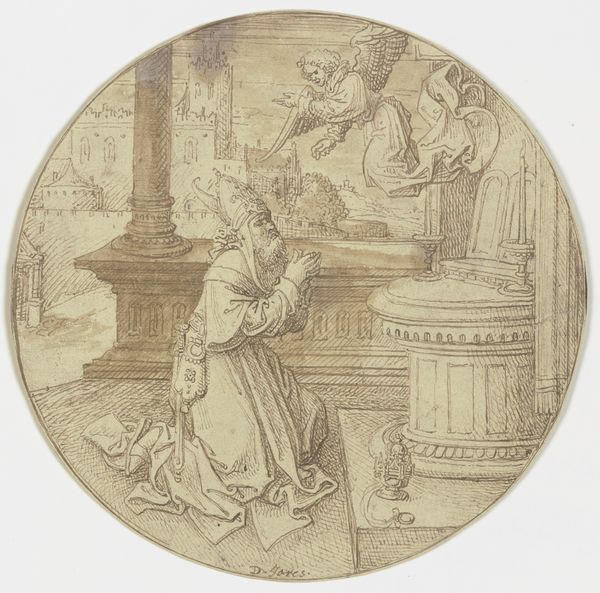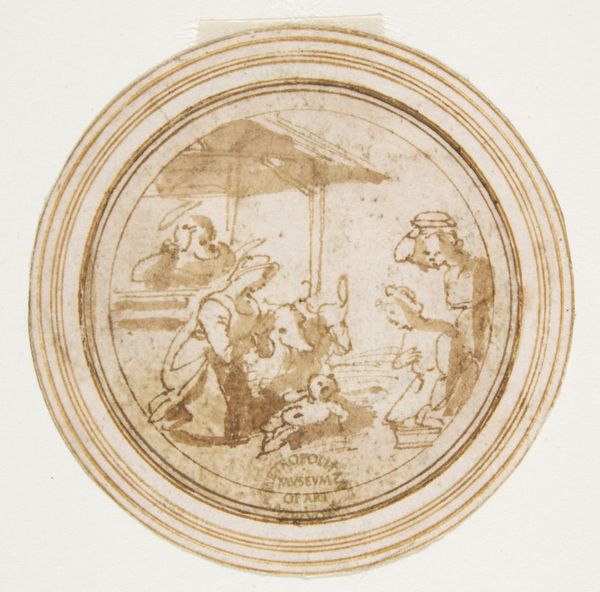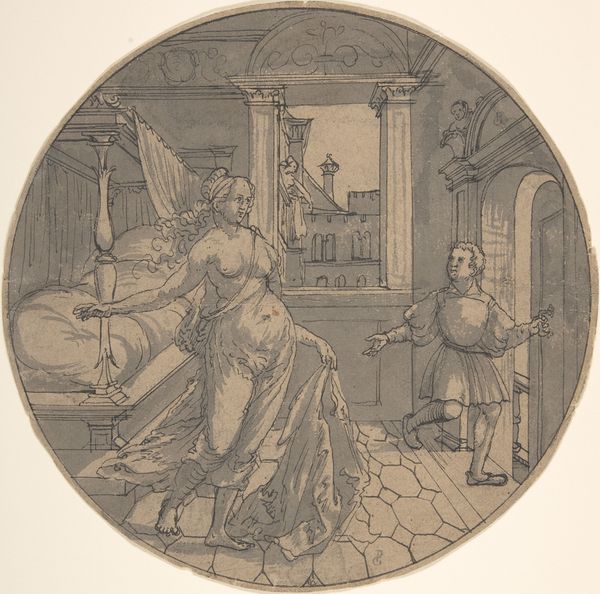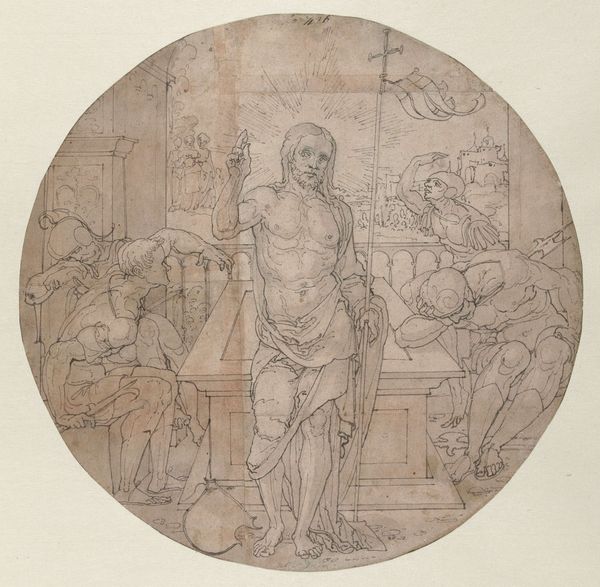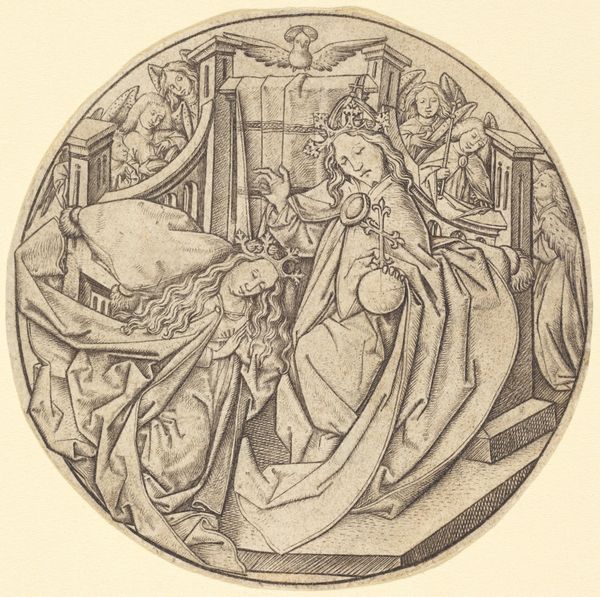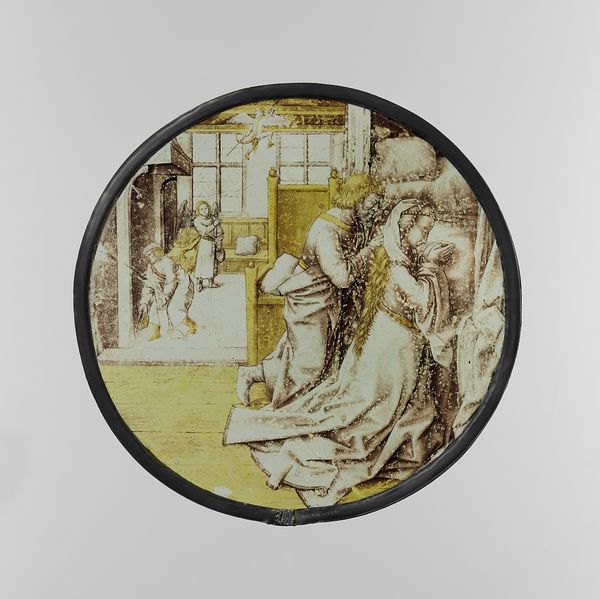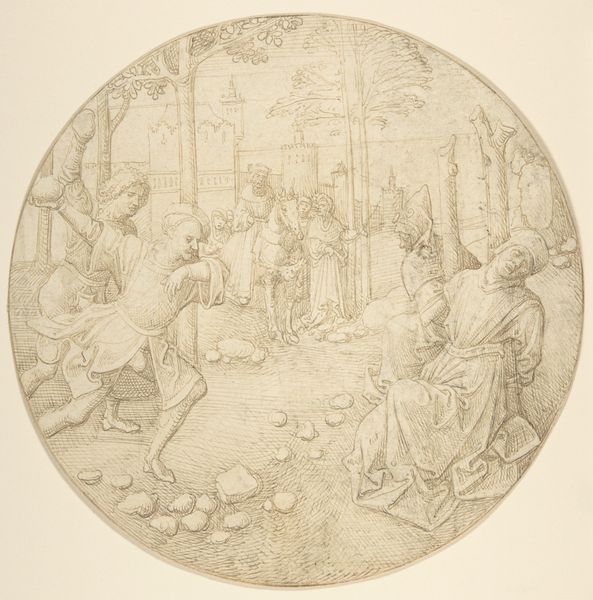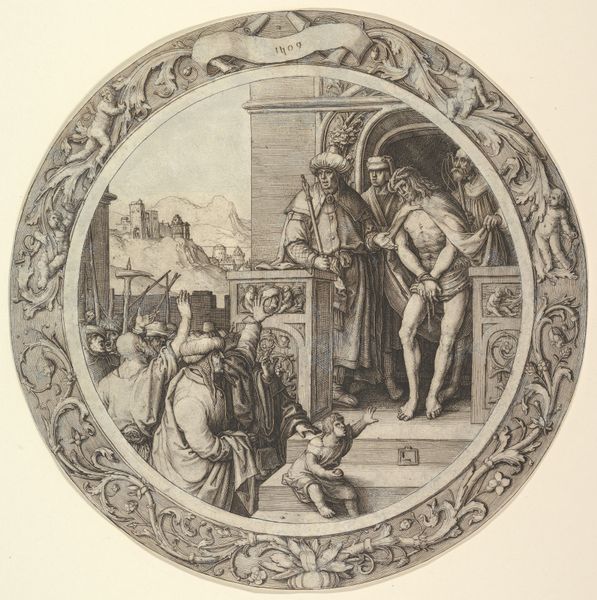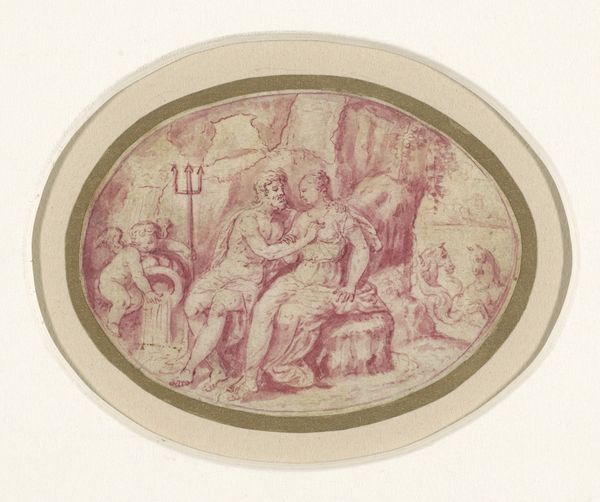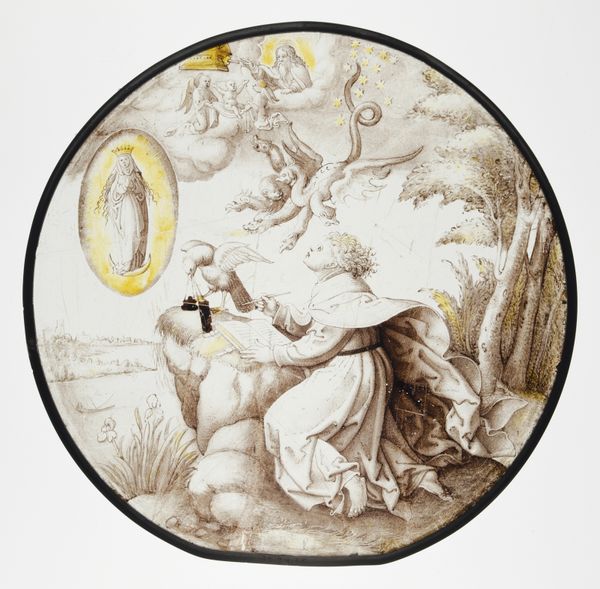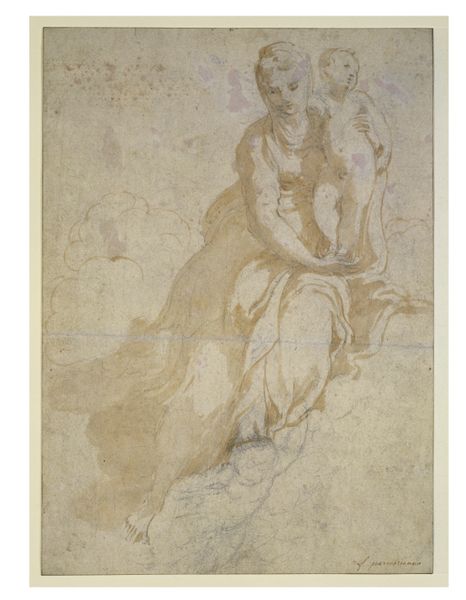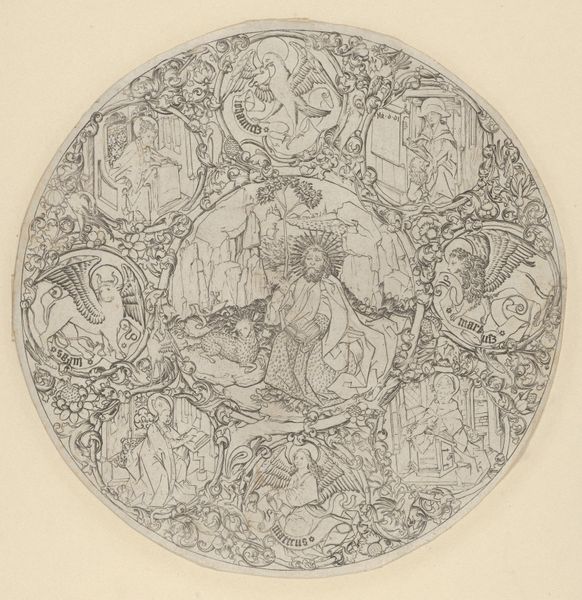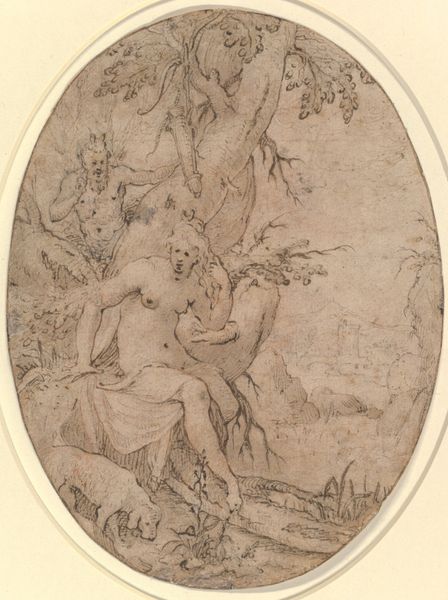
drawing, brown-ink, ink, pen
#
portrait
#
drawing
#
brown-ink
#
figuration
#
11_renaissance
#
ink
#
coloured pencil
#
pen
#
history-painting
#
italian-renaissance
Dimensions: 8 3/16 x 8 3/16 in. (20.8 x 20.8 cm) (sheet, tondo)16 1/4 × 16 1/4 × 3/4 in. (41.28 × 41.28 × 1.91 cm) (outer frame)
Copyright: Public Domain
This drawing of Saint Jerome was made by an anonymous artist. Executed in ink on paper, its circular format, or tondo, immediately draws the eye. Notice the linear precision, which meticulously defines the architectural elements and the figure of Saint Jerome himself. The composition, while intricate, maintains a delicate balance; Jerome is captured in the act of writing, his lion resting quietly at his feet. The architectural backdrop, rendered with careful detail, adds depth and spatial context to the scene. The choice of a tondo format is also significant. Popular during the Renaissance, the tondo could represent harmony and completion. It frames the image, inviting us to consider themes of knowledge, reflection, and the integration of spiritual wisdom within a structured, harmonious world. The overall effect is one of poised contemplation, where the visual structure supports a deeper intellectual engagement. The drawing invites us to think about how the arrangement of forms contributes to the work’s thematic depth.
Comments
minneapolisinstituteofart almost 2 years ago
⋮
This design is for a type of stained glass produced in the Low Countries during the early 16th century. The panes were often circular and small. Such a highly finished drawing might have been shown to a patron before work began on the glass itself. The artist was a productive Antwerp Mannerist painter whose works lack signatures or other documentation. Historians assigned the name Master of 1518 based on the date inscribed on one of his altarpieces. Saint Jerome is shown here as a gaunt, elderly scholar in a monastic setting. Accompanying him is the (charmingly elongated) lion that became his protector after Jerome removed a thorn from the beast’s paw. That tender scene appears in miniature in the background.
Join the conversation
Join millions of artists and users on Artera today and experience the ultimate creative platform.
